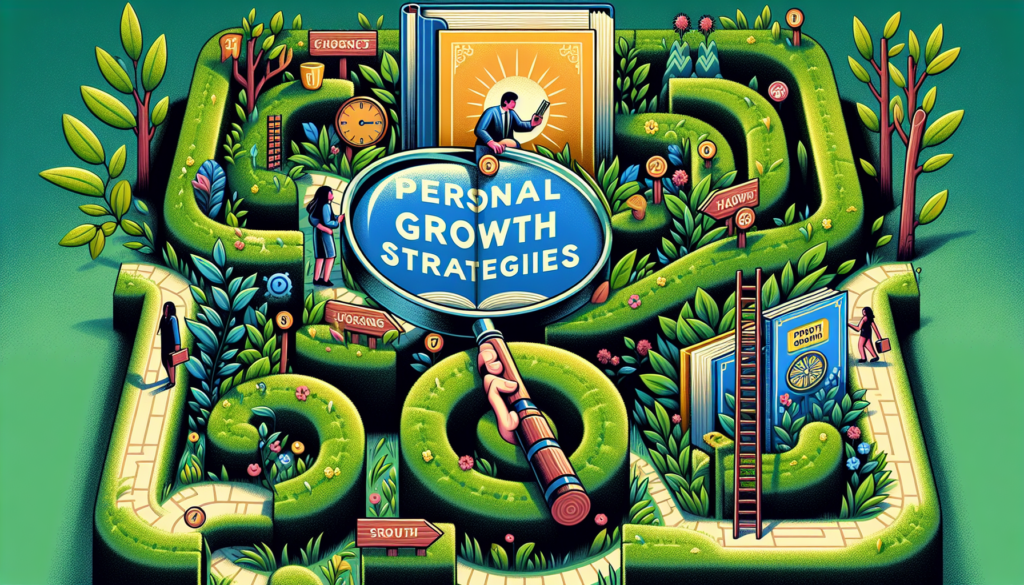Unlocking Success: Mastering Goal Setting Techniques
Setting goals is an essential aspect of personal and professional growth. Whether you aspire to enhance your productivity, improve your health, or achieve career milestones, having clear and actionable goals can provide a roadmap to success. However, simply jotting down a list of objectives is not enough. To truly harness the power of goal setting, one must understand and implement effective techniques that drive motivation, focus, and progress.
In this comprehensive guide, we will delve deep into the world of goal setting techniques, exploring the various strategies, tips, and insights that can help you maximize your potential and reach new heights. From setting SMART goals to utilizing visualization and accountability, we will uncover the secrets to setting goals that inspire and empower.
The Psychology of Goal Setting
Before we dive into specific techniques, it is crucial to understand the psychological principles that underpin effective goal setting. Psychologists have long studied the impact of goal setting on motivation, performance, and overall well-being. One prominent theory is Locke and Latham’s Goal Setting Theory, which posits that setting specific and challenging goals can lead to higher levels of performance compared to vague or easy goals.
Furthermore, the concept of self-efficacy, popularized by psychologist Albert Bandura, highlights the importance of believing in one’s ability to achieve goals. When individuals have a strong sense of self-efficacy, they are more likely to set ambitious goals and persevere in the face of obstacles.
Understanding these psychological principles can help you approach goal setting with a strategic mindset, maximizing your chances of success. By incorporating these insights into your goal-setting process, you can cultivate a growth-oriented mindset and propel yourself towards your aspirations.
Setting SMART Goals
One of the most well-known and effective goal setting techniques is the SMART criteria. SMART stands for Specific, Measurable, Achievable, Relevant, and Time-bound. By applying these criteria to your goals, you can ensure they are clear, actionable, and aligned with your overarching objectives.
Specific goals are clearly defined and focused, leaving no room for ambiguity. For example, instead of setting a goal to “exercise more,” a specific goal would be “to jog for 30 minutes three times a week.” Measurable goals allow you to track your progress and celebrate milestones along the way. Achievable goals are challenging yet attainable, pushing you out of your comfort zone without setting unrealistic expectations.
Relevant goals are meaningful and aligned with your values and priorities. Time-bound goals have a defined deadline, creating a sense of urgency and accountability. By incorporating the SMART criteria into your goal setting process, you can increase your chances of success and stay motivated throughout your journey.
Visualizing Success
Visualization is a powerful technique that can enhance goal setting and boost performance. By creating vivid mental images of achieving your goals, you can increase motivation, focus, and confidence. Athletes, performers, and high achievers often use visualization to mentally rehearse success and overcome obstacles.
To incorporate visualization into your goal setting routine, take time each day to imagine yourself accomplishing your goals in detail. Visualize the sights, sounds, and emotions associated with achieving success. By engaging all your senses in this mental exercise, you can create a compelling vision of your desired outcomes and reinforce your commitment to reaching them.
Additionally, creating a vision board or visual representation of your goals can serve as a tangible reminder of what you are working towards. Surround yourself with images, quotes, and symbols that inspire and motivate you, keeping your goals at the forefront of your mind.
Accountability Partners and Support Systems
Accountability is a powerful tool for goal achievement. By sharing your goals with a trusted partner, mentor, or friend, you can increase your commitment and motivation to succeed. Accountability partners can provide encouragement, feedback, and support, holding you to your commitments and helping you stay on track.
When selecting an accountability partner, choose someone who is reliable, understanding, and invested in your success. Communicate your goals clearly and establish regular check-ins to discuss your progress and challenges. By sharing your journey with others, you can gain valuable insights, perspective, and motivation to push through obstacles and reach your goals.
Tracking Progress and Adjusting Course
Effective goal setting involves more than just defining objectives; it also requires monitoring progress, evaluating outcomes, and making adjustments as needed. By tracking your progress regularly, you can stay on course, identify potential roadblocks, and celebrate small wins along the way.
There are various tools and techniques you can use to track your goals, such as daily journals, progress charts, or digital apps. Find a method that works for you and allows you to visualize your journey towards success. Additionally, be open to reassessing your goals and making revisions based on new information or changing circumstances.
Flexibility and adaptability are key components of effective goal setting. By remaining agile and responsive to feedback, you can refine your approach, overcome setbacks, and ultimately achieve greater success.
Celebrating Achievements and Practicing Gratitude
As you progress towards your goals, it is essential to acknowledge and celebrate your achievements along the way. Celebrating milestones, no matter how small, can boost your morale, reinforce your commitment, and sustain your motivation for future endeavors.
Take time to reflect on your progress, express gratitude for the support you have received, and recognize the effort you have put into pursuing your goals. By cultivating a sense of appreciation and positivity, you can enhance your overall well-being and outlook on life.
Practicing gratitude can also help you stay grounded, resilient, and focused on the present moment. By acknowledging the blessings in your life and the progress you have made, you can cultivate a sense of fulfillment and contentment that transcends the pursuit of external goals.
Expert Opinions
According to renowned psychologist Dr. Edwin Locke, a pioneer in goal-setting theory, “setting specific and challenging goals leads to higher performance than easy or vague goals.” His research has demonstrated that individuals who set clear, measurable goals are more likely to achieve success in various domains of life.
Similarly, motivational speaker Tony Robbins emphasizes the importance of setting compelling goals that inspire action and drive results. He advocates for creating a vision of your desired future and taking consistent steps towards its realization, leveraging the power of focus, determination, and resilience.
Goal-setting expert Brian Tracy stresses the significance of clarity, focus, and persistence in goal achievement. He recommends breaking down large goals into smaller, manageable tasks, prioritizing actions, and staying committed to the process despite challenges or setbacks.
Common Misconceptions
One common misconception about goal setting is the belief that goals must be rigid and unchanging. In reality, goals should be dynamic and adaptable to evolving circumstances and priorities. By remaining flexible and open to adjustments, you can navigate unforeseen challenges and seize new opportunities along the way.
Another misconception is that achieving goals will automatically lead to happiness and fulfillment. While reaching milestones can bring a sense of accomplishment, true happiness comes from within and is not solely dependent on external achievements. It is essential to cultivate a positive mindset, practice self-care, and nurture relationships to experience lasting happiness and well-being.
Comparative Analysis
When comparing different goal setting techniques, it is essential to consider their strengths, weaknesses, and suitability for your unique circumstances. While the SMART criteria provide a structured framework for setting goals, they may not account for the emotional or intuitive aspects of goal setting.
On the other hand, visualization techniques can enhance motivation and focus but may not be suitable for individuals who struggle with mental imagery. Accountability partnerships can offer support and encouragement but require a high degree of trust and commitment from both parties.
Ultimately, the most effective goal setting technique is one that aligns with your values, preferences, and objectives. By experimenting with different approaches and refining your process over time, you can discover the strategies that work best for you and propel yourself towards success.
Conclusion
Goal setting is a powerful tool for personal and professional development, empowering individuals to clarify their objectives, cultivate motivation, and achieve meaningful results. By incorporating techniques such as setting SMART goals, visualizing success, and leveraging accountability partnerships, you can unlock your full potential and propel yourself towards success.
Remember, goal setting is not just about reaching the destination; it is also about enjoying the journey, celebrating achievements, and practicing gratitude along the way. By embracing a growth-oriented mindset, staying adaptable to change, and maintaining a sense of purpose, you can navigate challenges, seize opportunities, and create a life filled with purpose and fulfillment.
As you embark on your goal-setting journey, remember that success is not defined by external accolades or material possessions but by the growth, resilience, and joy you cultivate along the way. Embrace the power of goal setting, harness your inner potential, and watch as your dreams transform into reality.


